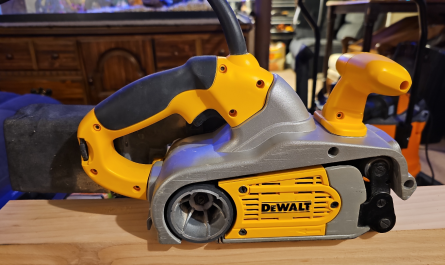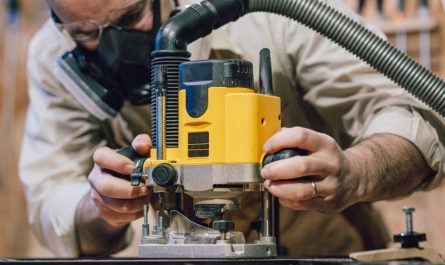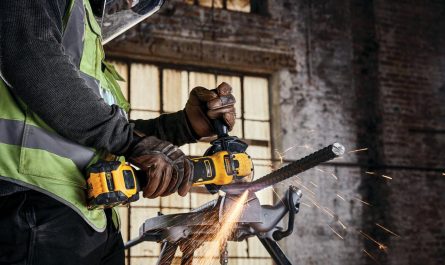In the fast-paced world of carpentry, versatility and accuracy are key. That’s why the jigsaw has become an essential tool for professionals and DIYers alike. Replacing many manual sawing tasks, the jigsaw offers curved and straight cuts, intricate detailing, and the ability to work with a variety of materials—all with the squeeze of a trigger.
This article explores the evolution, types, technical specifications, and practical applications of jigsaws in woodworking. Whether you’re cutting plywood for cabinetry or creating artistic patterns in hardwood, understanding how to use a jigsaw effectively can elevate your craftsmanship and productivity.
History and Evolution of the Jigsaw
The first powered jigsaws emerged in the 1940s, designed to bring flexibility to wood cutting with a reciprocating blade. Early models were corded and focused on delivering controlled cuts for furniture makers and carpenters.
Over the decades, innovations led to cordless models, orbital action settings, and tool-free blade changes, making jigsaws more convenient, accurate, and adaptable. Today, they are a go-to solution for curved cuts, plunge cuts, and even bevels across a range of materials—from softwoods to metals and plastics.
Types of Jigsaws and Their Applications
1. Corded Jigsaw

Description and Use:
Corded jigsaws are reliable power tools that draw electricity directly from an outlet, offering uninterrupted performance without worrying about battery life. This makes them perfect for prolonged cutting tasks or working through dense and thick materials that demand consistent power. With powerful motors ranging between 500–800 watts, they provide the torque needed for both fine and rough cutting tasks.
These jigsaws are well-suited for cutting through hardwood, plywood, particleboard, MDF, and even plastics or thin metal with the right blade. They’re commonly used in cabinetry, countertop fitting, framing cutouts, and any application that requires straight, curved, or plunge cuts. Many corded jigsaws come equipped with features like variable speed control, orbital action settings, and tool-free blade changes, allowing for easy customization based on material and project.
Professionals often choose corded jigsaws in workshop settings where portability isn’t a concern but cutting precision and long runtime are critical. Their dependable power makes them ideal for repeated or large-volume cuts, while optional bevel adjustments expand their use to angled and miter cuts. If you’re working on a large woodworking project that requires consistent cutting force, the corded jigsaw is a go-to option.
Technical Characteristics:
- 500–800 watts of motor power
- Adjustable speed (up to 3,000 strokes per minute)
- Orbital action settings for aggressive or fine cuts
- Bevel cutting up to 45°
Price Range:
€70 – €200
2. Cordless Jigsaw

Description and Use:
Cordless jigsaws are built for mobility and convenience, powered by lithium-ion batteries typically in the 18V–20V range. They offer freedom from cords, making them extremely handy on job sites or when working in areas without easy access to power outlets. Modern battery technology now allows these tools to deliver power comparable to mid-range corded models, making them more viable than ever for serious carpentry work.
These jigsaws are ideal for tasks such as on-site trim work, cutting flooring to size, or adjusting pieces during installation. Their cordless design allows you to maneuver easily in tight or awkward spaces, such as between installed cabinets or in attics and basements. Many cordless jigsaws also feature helpful enhancements like LED lights, dust blowers, and ergonomic grips that improve both visibility and comfort during use.
DIYers and contractors appreciate cordless jigsaws for their balance of portability and performance. While runtime is limited by battery charge, spare batteries can solve this issue for longer projects. If your work involves moving between rooms, job sites, or various materials, a cordless jigsaw provides the flexibility you need without sacrificing too much in terms of cutting ability.
Technical Characteristics:
- 18V–20V lithium-ion battery
- Tool-free blade change systems
- LED lights and dust blowers for better visibility
- Variable speed triggers for control
Price Range:
€100 – €300
3. Barrel-Grip Jigsaw

Description and Use:
Barrel-grip jigsaws feature a low-profile, horizontal handle design that allows users to grip the body of the saw directly rather than from above. This design provides enhanced control and stability, especially during intricate and precise cuts. The lower center of gravity also helps reduce vibration and fatigue, giving woodworkers the ability to guide the blade more accurately along complex patterns.
These jigsaws are ideal for scrollwork, cabinetry, marquetry, and any fine carpentry project that requires steady hands and detailed movement. Because they allow you to get closer to the cutting surface, barrel-grip models are often the preferred choice for cutting along templates, tight curves, and internal cutouts. They’re especially popular among experienced users who need precision more than raw cutting power.
Though they can take some getting used to for those familiar with top-handle jigsaws, many professionals swear by barrel-grip models for their superior control. They’re often used in workshops and craft environments where precision is more important than speed. If you’re looking to make clean, detailed cuts and want a tool that feels like a natural extension of your hand, a barrel-grip jigsaw is a smart choice.
Technical Characteristics:
- Lower profile for controlled grip
- Compatible with T-shank blades
- Excellent for curved and scroll cuts
- Often includes precision guides and LED lighting
Price Range:
€120 – €350
4. Orbital Jigsaw

Description and Use:
Orbital jigsaws take the basic up-and-down motion of a standard jigsaw blade and add a slight forward-and-backward motion to it. This orbital action helps the blade cut faster and more aggressively through thicker or tougher materials by clearing debris and allowing each stroke to bite more efficiently. This feature is adjustable on many models, so users can tailor the aggressiveness of the cut depending on the material and precision needed.
These jigsaws are perfect for construction work, demolition, and rough carpentry where speed is more important than finish quality. The more aggressive orbital settings are excellent for cutting through wood beams, thick plywood, or flooring materials, while the lower settings allow for finer control on more delicate work. The ability to switch between modes makes orbital jigsaws extremely versatile for jobs that require both speed and accuracy.
Professionals and renovators value orbital jigsaws for their ability to save time on the job without compromising too much on accuracy. While they might not be ideal for ultra-fine cuts, their raw cutting efficiency is unmatched in many scenarios. If you often switch between rough and refined cuts, or work with varying wood thicknesses, having an orbital jigsaw in your toolkit can seriously boost productivity.
Technical Characteristics:
- Multiple orbital settings (0–3 or more)
- Powerful motors for fast material removal
- Great for demolition or construction-grade work
- Can be used with wood, plastic, or soft metal
Price Range:
€80 – €250
Common Applications in Carpentry
- Curved Cuts in Wood: Jigsaws excel at cutting curves in plywood, hardwood, and MDF.
- Interior Cutouts: Ideal for sink cutouts, electrical box openings, or other plunge cuts.
- Detail & Decorative Work: Barrel-grip and cordless jigsaws allow precise, fine control for scrollwork or inlays.
- Bevel Cuts: With adjustable shoe plates, jigsaws can make angled cuts for joining wood at precise angles.
- Multi-material Use: Depending on the blade, jigsaws can also cut plastic, laminate, aluminum, and tile.
Conclusion
The jigsaw revolutionized woodworking by combining versatility, control, and precision in one compact tool. With a variety of specialized models—cordless, corded, barrel-grip, and orbital—it’s easier than ever to tackle complex carpentry cuts with speed and finesse.
By choosing the right type for your project, keeping blades sharp, and mastering control techniques, your jigsaw will become an indispensable part of your tool collection—helping you work smarter, faster, and with far greater creative freedom.



